Gabriele Pannocchia
August 29, 2025
General overview
One of the core activities of the project is to promote excellence in research through scientific publications regarding automatic control methods and applications oriented to smart industries. In compliance with the EU open-access/open-research policies, all publications arising from the project are available on the Zenodo repository (https://zenodo.org/communities/frontseat/).
During the entire duration of the project 70 publications, related to the main FrontSeat goals were released, as detailed:
- 17 journal papers (8 during the second half)
- 53 conference papers (26 during the second half)
In addition, 11 posters were presented at various conferences.
Publication venues encompass both theory- and application-focused leading journals, as well as the foremost conferences in automatic control. Notable examples include the IFAC World Congress 2023, IFAC ADCHEM 2024, IFAC NMPC 2024, IFAC DYCOPS 2025, ESCAPE 35, among others.
Major topics covered in these publications are:
- Real-time optimization: theory and applications
- Performance monitoring of industrial control systems
- Model predictive control (MPC): theory and efficient/embedded implementation
- Research- and education-oriented hardware and software for control engineering
- Machine learning methods for optimization-based control and monitoring
- Data-driven modeling and control systems design
- Experimental validation of control systems
- Inferential/Soft-sensors and their industrial application
- Cyber-secure process control systems
- Cognitive performance and human-in-the-loop systems
Highlights
This overview features six publications released between April 2024 and August 2025, illustrating the importance of the research topics addressed and the successful collaboration among FrontSeat partners and international scholars.
1. Soft-Sensor-Enhanced Monitoring of an Alkylation Unit via Multi-Fidelity Model Correction
(https://zenodo.org/records/16032910)
This paper, authored by researchers from STUBA and UNIPI and presented at the European Symposium on Computer Aided Process Engineering (ESCAPE 35) in Ghent, Belgium, July 2025, examines the application of historical data in industrial process monitoring to enhance decision-making and operational efficiency. The study introduces a multi-fidelity soft-sensor methodology utilizing Gaussian processes to reconcile discrepancies between high-frequency sensor measurements and less frequent laboratory analyses. Through a comparative analysis of static and dynamic modeling frameworks, the research assesses their capability to accurately reflect process dynamics. The proposed approach demonstrates improved predictive accuracy and real-time control over traditional methods, offering significant value for industries seeking to minimize reliance on expensive laboratory testing.
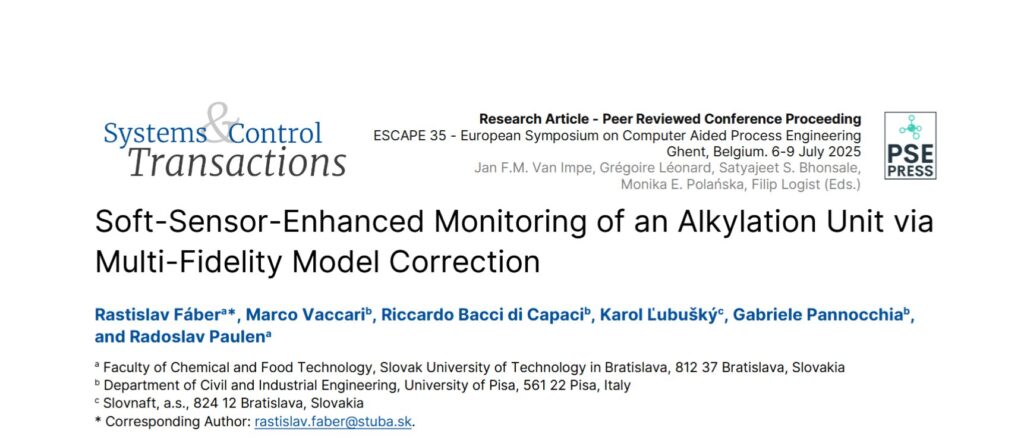
2. What is buzzing around me? Assessing the Influence of Indoor Unmanned Aerial Vehicles on Human Cognitive Performance and Well-Being
(https://zenodo.org/records/15025512)
This paper, authored by researchers at RUB and published in Applied Ergonomics in May 2025, investigates the increasing use of Unmanned Aerial Vehicles (UAVs) in both personal and professional environments. The study specifically explores human factors associated with the practical integration of UAVs. Employing a single-factor experimental design, the researchers assessed the impact of indoor UAV flights on human cognitive performance and well-being. Forty-eight participants were assigned to either an experimental group (EG), in which UAVs followed predetermined indoor trajectories behind a safety net, or a control group (CG). Both groups completed the Work Efficiency Test, and measures such as flow experience, mental effort, and mental strain were recorded. The results indicate that the EG demonstrated marginally lower performance on the Work Efficiency Test and reported diminished flow during task execution compared to the CG. Qualitative interviews revealed that participants found UAV noise and flight patterns distracting. These findings underscore the importance of considering cognitive performance when implementing UAV technology in workplace settings.

3. Improved Neural Ordinary Differential Equation-based Reduced Model for Impinging Jet using Wall Shear Stress
(https://zenodo.org/records/14557556)
This paper, co-authored by researchers from RUB and STUBA alongside international collaborators and published in Physics of Fluids in November 2024, addresses the complexities associated with modeling impinging jet flow, which pose significant challenges for conventional methodologies due to inherent nonlinear dynamics. The study presents a neural network-based reduced-order modeling framework that integrates proper orthogonal decomposition (POD) with neural ordinary differential equations (NODE) to analyze experimental data collected from a circular impinging jet. It further compares various data assimilation techniques utilizing wall shear stress measurements. Experimental velocity fields and shear stress are captured using time-resolved PIV and polarography. Results indicate that the POD-NODE approach demonstrates superior accuracy relative to dynamic mode decomposition and LSTM models, particularly when wall shear stress is incorporated as additional states, consistently outperforming extended Kalman filters.
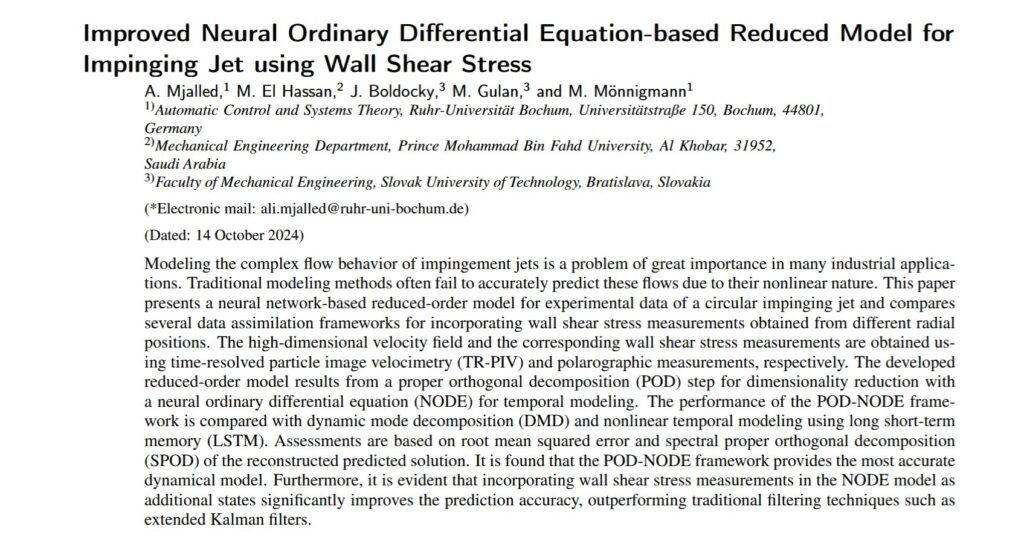
4. Advanced Methods for Monitoring and Fault Diagnosis of Control Loops in Common Rail Systems
(https://zenodo.org/records/14012826)
This paper, authored by researchers from UNIPI and published in Processes in October 2024, investigates the control of common rail systems, which are integral to the performance of modern diesel engines. Despite their significance, these systems are susceptible to degradation over time due to factors such as increased friction, mechanical backlash, or operation outside prescribed parameters—such as the use of contaminated or substandard fuel. The study employs advanced data-driven methodologies to facilitate automated monitoring, diagnosis, and fault estimation within these systems, with particular emphasis on the engine control unit’s pressure regulation loop. Utilizing a Hammerstein model that incorporates both nonlinear and linear components, the proposed approach effectively identifies and quantifies three primary sources of oscillation: valve stiction, aggressive controller tuning, and external disturbances. The efficacy of the method is demonstrated through a series of case studies.
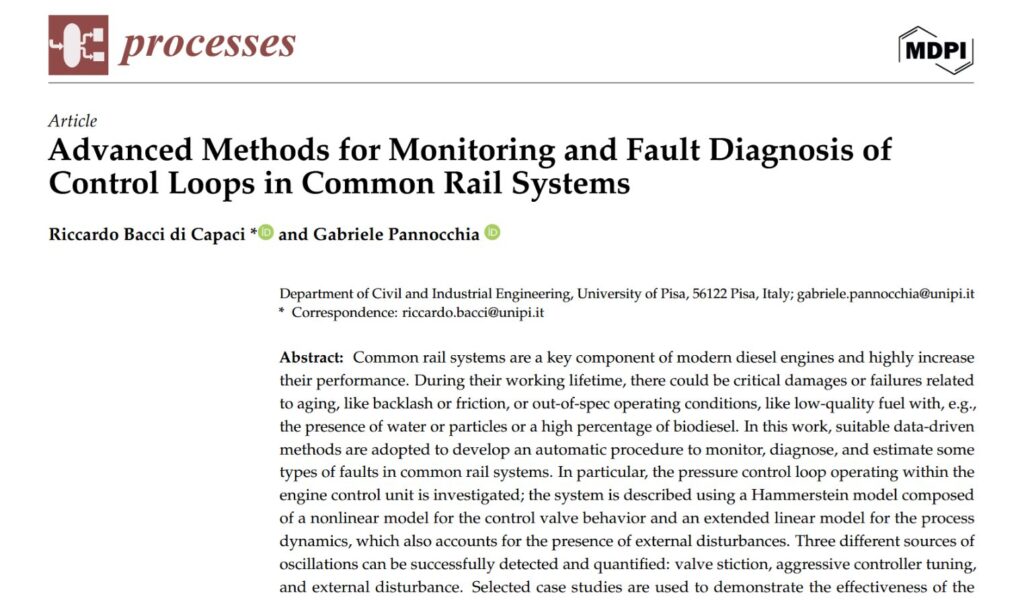
5. Self-tunable approximated explicit MPC: Heat exchanger implementation and analysis
(https://zenodo.org/records/13144101)
This paper, authored by researchers from STUBA and published in the Journal of Process Control in August 2024, examines the development of a tunable approximated explicit model predictive control (MPC) framework that enables real-time adjustments without the need for online optimization. The study presents a self-tuning control policy capable of automatically adapting to varying operating conditions, eliminating the requirement for manual intervention. The controller incorporates a tuning parameter, which is modulated through linear interpolation between boundary optimal actions based on the current reference, thereby facilitating effective reference tracking. Additionally, the proposed scaling method permits distinct tuning parameter ranges tailored to specific conditions. Experimental validation using a nonlinear, asymmetric laboratory heat exchanger demonstrates improved performance in terms of reduced control error, minimized overshoot and undershoot, and shorter settling time when compared with conventional fixed controllers.
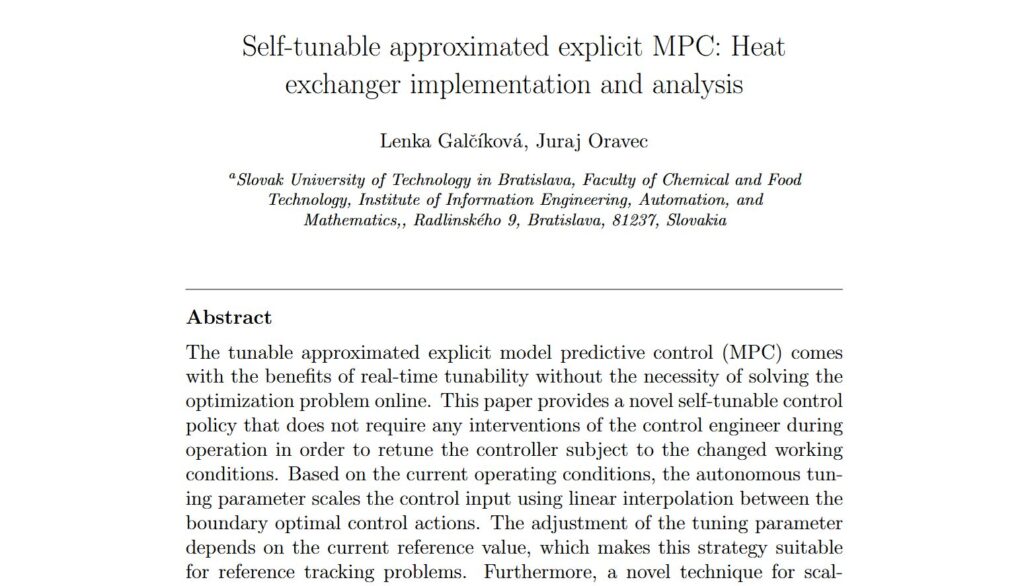
6. Velocity control design of hyperbolic distributed parameter systems using zeroing dynamics and zeroing-gradient dynamics methods
(https://zenodo.org/records/10968611)
This paper, coauthored by a researcher from STUBA alongside international collaborators and published in the Journal of Process Control in June 2024, explores the efficacy of velocity control as a more accessible form of actuation compared to boundary and distributed actuations for hyperbolic distributed parameter systems. Nevertheless, utilizing partial differential equation models to design velocity control introduces considerable challenges within control engineering, notably the potential for control singularities that compromise system controllability. The study investigates the zeroing dynamics method as an alternative strategy for designing velocity controllers under the late lumping paradigm. A velocity state feedback mechanism based on the zeroing dynamics method is proposed to achieve precise output tracking. To mitigate the issue of control singularity, the zeroing gradient method is incorporated with the zeroing approach, resulting in a robust state feedback solution that preserves output tracking capabilities even in the presence of singularities. The convergence of tracking errors is rigorously demonstrated for both state feedback designs. The effectiveness of these methodologies is illustrated using case studies involving a steam-jacketed heat exchanger and a non-isothermal plug flow reactor.
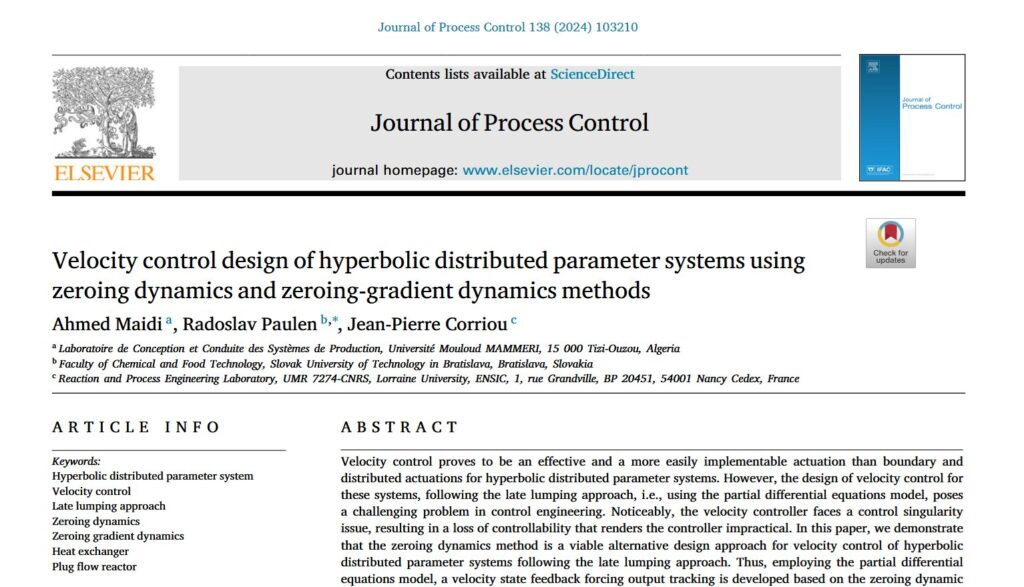
This project has received funding from the European Union’s Horizon under grant no. 101079342 (Fostering Opportunities Towards Slovak Excellence in Advanced Control for Smart Industries).

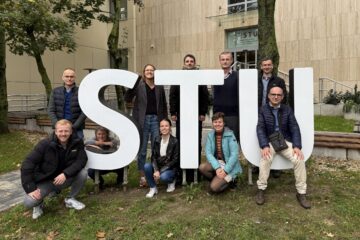
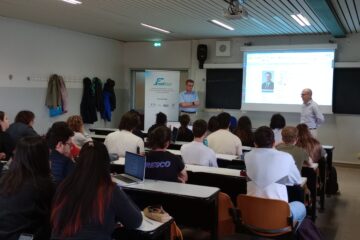


0 Comments